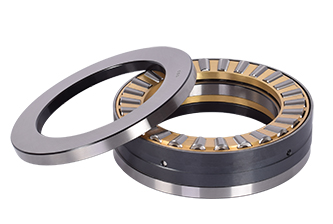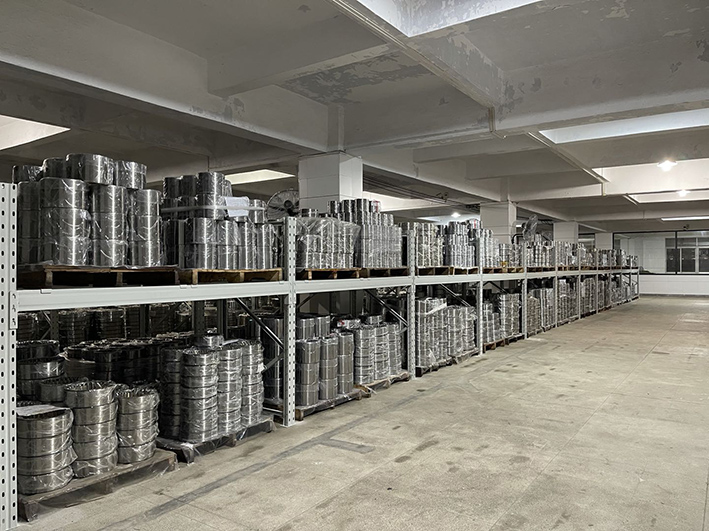Achievement for Old Rolling Mill Upgrading | Esgbearing.com
|
|
|
|
|
|
|
|
|
|
|
|
|
|
|
|
|
|
|
|
|
|
|
|
|
|
|
|
|
|
|
|
|
|
|
|
|
|
The working conditions for steel mill bearings are demanding as they will face dust, steel particles, water, heat, high speed and high temperature.
Four-row cylindrical roller bearing works as the radial cylindrical roller bearings on the roll neck. Its performance values the most for the rolling mill bearings.
ESG Bearing, as an expert on steel rolling mill bearings. We are always improving ESG quality to better meet steel mill’s requirements. With years of testing, ESG Bearing now announced that ESG has successfully make our four-row cylindrical roller bearings with steel cage.
The working life, wear-resistance and performance of the radial cylindrical roller baring with steel cage proves to be better than bearing with brass cage.
|
Succeed in steel cage on rolling mill bearings
|
|||||
|
ESG Bearing, specializes in making high quality rolling mill bearings for steel mills of bars, angles, beams, coil and sheet, etc. |
|||||
|
|
↑ higher load |
||||
|
+ wear resistance |
|||||
|
→ longer working life |
|||||
|
compared with brass cage |
|||||
|
About This Achievement |
|||||
|
ESG Bearing
has been spent about 3 years for the testing and improving our production of
radial roller bearing with steel cage. And now the overall feedback for steel
cage is good with ESG’s control for every processing steps. |
|||||
| Mechanical Performance | ||||
| Cage | Tensile Strength | Yield Limit | Peel Strength | Hardness |
| σb | σ0.2 | δ | HB | |
| steel cage | >400MPα | >250MPα | 18% | >160~190 |
| brass cage | >250MPα | >120MPα | 15% | 80~100 |

|
||||
| steel cage brass cage | ||||
| > 90% clients re-order four-row cylindrical roller bearing with steel cage | ||||
Bilateral double-row thrust tapered roller bearings are a specific type of bearing designed to carry higher axial loads on the roll neck of the rolling mill stands. As the name implies, they can carry axial loads in both directions.

Usually, they are more often used in modern rolling mills, working with four-row cylindrical roller bearings, and double-row cylindrical roller bearings. Compared with angular contact ball bearings, and deep groove ball bearings, they can achieve the requisite axial loads with less space of the bearing housing.
Four row cylindrical roller bearings + Thrust Bearings
Cylindrical roller bearings inner diameter works together with roll neck to endure radial force. It has the advantages of heavy load, high rotation speed limit, high precision,inner and outer rings seperability and replacability, easy procession, lower production cost and convenient mounting and dismounting. The thrust bearings endure axial force. The detailed structure type can be chosen based on rolling mill feature.
When the heavy load speed is slow, the cylindrical roller bearings work with thrust bearings to endure thrust load with smaller axial clearance. When the rolling speed is higher, it works with angular contact ball bearings with higher rotation speed limit and with strick control of axial clearance to make the roller work with close axial guide and endure general axial load force.
This bearing specification type has the advantage of longer bearing life, reliability, high presion of the rolling products and easy control. So they are applicant widely in wire steel rolling mill, plate steel rolling mill,frame rolling mill, double-support roll of cold rolling mill and hot rolling mill.
Four Row Tapered Roller Bearings
Four row tapered roller bearings can endure both radial force and axial force without thrust bearings to make the main machine more compact. The inner diameter and the roll neck of four row tapered roller bearings work together with loose fit-up for convenient installation and dismounting. However sometimes the loose fit-up will slip. So the inner diameter will be made with screw oil tank.
At present, this specification model is still widerly applied in the working rolls of the four row hot rolling mill and cold rolling mill, bloomer and beam rolling mill.
In the realm of industrial machinery, where efficiency and reliability are paramount, the precision of each component plays a pivotal role. One such critical component is the rolling mill bearing, and in our pursuit of excellence, we've elevated our manufacturing process to deliver super precision on the contact surface of the bearing roll way.
The Precision Engineering Process: Our commitment to quality begins with the meticulous engineering of the rolling mill bearings. We employ advanced technologies and cutting-edge manufacturing processes to achieve super precision on the crucial contact surfaces. This precision is particularly concentrated on the bearing roll way, ensuring an unparalleled level of accuracy in its form and function.
The precision engineering process involves the use of state-of-the-art machinery, stringent quality control measures, and the expertise of our skilled engineers. We leave no room for error, consistently adhering to tight tolerances to create a flawless and high-performance rolling mill bearing.
Benefits of Super Precision Rolling Mill Bearings:
1. Enhanced Performance: The super precision on the contact surface of the bearing roll way translates to superior performance in real-world applications. The precisely crafted bearings contribute to smoother operations and reduced friction, optimizing the overall efficiency of the rolling mill.
2 Extended Service Life: The precision-engineered bearings are designed to withstand the rigors of heavy-duty industrial applications. By minimizing wear and tear through precise construction, these bearings boast an extended service life, reducing downtime and maintenance costs.
3. Consistency in Operation: The uniformity achieved through super precision ensures consistent performance across all units. This consistency is crucial for the seamless operation of the rolling mill, contributing to the reliability of the entire system.
ESG Bearing started running our new bearing warehouse recently.
ESG Bearing has been making bearings for steel mills of billets, rebars, sections, angles, coils, for years. We deeply know what steel mills are always looking for. Quality bearing with the fastest delivery.
ESG Bearing has a large stock of steel mill bearings for better service to our clients. Our stock covers most of the highly wanted bearing models for steel mill bearings. Our immediate delivery will also help steel mills reduce their stock and cost for maintenance.
You may also contact us for regular update of our stock list.


Four-row cylindrical roller bearings are mostly used in steel mill industry. ESG Bearing is using our experience, technology, expertise and commitment of quality to make the most suitable bearings for rolling mills.
Four row cylindrical roller bearings are mainly used in cold/hot rolling mill,bloomer and other steel rolling mill machines.The bearing structure is separate structure. The bearing rings and rollers can be separated easily. So it is convenient for bearing cleaning, checking, mounting and unmounting jobs.
FC model bearing is consist of two outer rings and one inner ring. On the both sides of outer rings, there are blocker,middle blocker on the middle of the blocker. There is no blocker on the inner rings.
FCD model bearings consist of two pieces of NN model bearings..
FC model and FCD model bearings can allow the axial movement within the axis base to two directions. So, this kind of bearing are suitable for movable end bearings.
As critical roller bearing of rolling mill, the spare parts of four row cylindrical roller bearings can be replaced, installed, dismounted and cleaned easily. Within the radial installation area, it can provide max. radial loading ability with lower friction factor.
There are three kinds of structure type: FC type, FCD type and FCDP type.
It belongs to separable bearings that inner ring can be seperated from the whole bearings. It has better limit rotation speed and can be interchangable. Protection cage can be brass or steel cages.
It belongs to separable bearing. However FCDP type will be much convenient than FCD type for separable degree. For FCD type, it can only make two inner rings separate from the whole bearing with higher limit rotation speed and interchangable feature. Protection cage can be brass or steel cages.
It is critical roller bearing. The spare parts can be separable with high precision. It is very convenient to install, dismount and clean. Within installation area, it can provide max. radial load ability with lower friction factor. So it is applied in high speed, heavy load and terible working environment of rolling mill production.